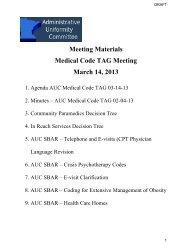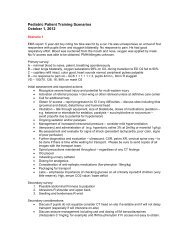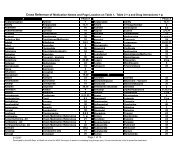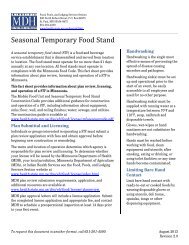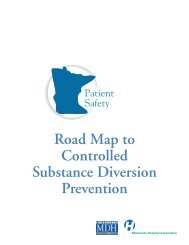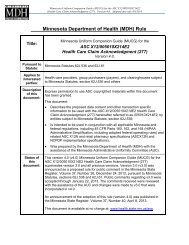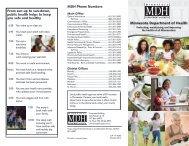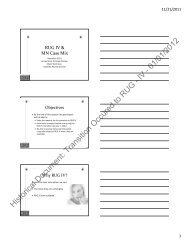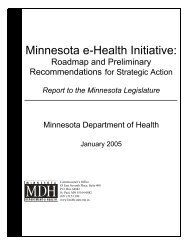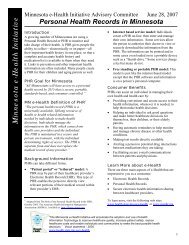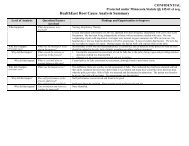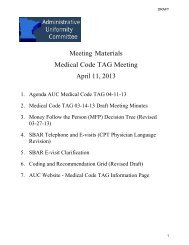Hearing Screening Training Manual - Minnesota Department of Health
Hearing Screening Training Manual - Minnesota Department of Health
Hearing Screening Training Manual - Minnesota Department of Health
You also want an ePaper? Increase the reach of your titles
YUMPU automatically turns print PDFs into web optimized ePapers that Google loves.
Ages/Grades: 1 month* to 3 years<br />
SCREENING PROCEDURES<br />
HEARING HISTORY<br />
Purpose: To determine if medical factors exist to put the child at risk for hearing<br />
loss<br />
Description: A review <strong>of</strong> the history questions with the parent or caregiver<br />
Equipment: Forms: See JCIH Risk Factors and Mommy Can You Hear me?<br />
http://www.health.state.mn.us/divs/fh/mch/unhs/resources/brochures/chec<br />
klist-english.html<br />
Facilities: Comfortable, private interview area<br />
Procedure: Question the parent/caregiver about the child's hearing history.<br />
Pass: No positive response to hearing history<br />
Rescreen/<br />
Refer: Refer to the Joint Committee on Infant <strong>Hearing</strong> Position Statement (2007)<br />
for a list <strong>of</strong> hearing loss risk indicators (page 13). Children with one or<br />
more risk factors should have ongoing hearing screening and at least one<br />
diagnostic audiology assessment by 24 to 30 months <strong>of</strong> age. 1516<br />
*For the 0-1 month time frame: The C&TC periodicity schedule indicates O/S. At this visit<br />
(or the first C&TC visit if this one is not scheduled), the parent should be asked if the infant had<br />
newborn screening in the nursery and if so, did the infant pass newborn screening. If the answer<br />
is no to either <strong>of</strong> these questions, the infant should be referred for OAE and/or ABR screening.<br />
7




